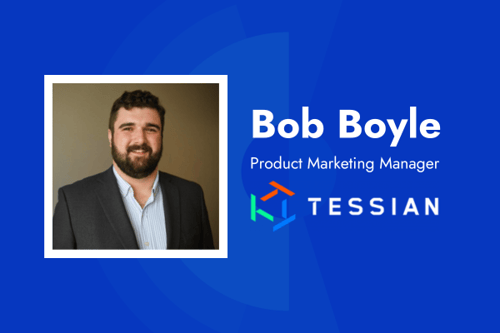A successful product launch is a machine with many moving parts—it requires focus, clear-thinking, and organization to successfully pull it off. While many product marketers are laser-focused on external communication, internal communications often don’t get the same level of care. Internal communication is essential to a successful product launch. It aligns the entire company on a single message, which makes the launch itself much more successful.
As a product marketer, you’re definitely well-versed in the key elements of launching your product out to your market. Now, let’s take a look at what needs to be done internally. In this article, we’ll teach you how to craft internal launch documentation, how to effectively communicate your launch plans to your company, and how to get each of your teams ready for launch day with product launch training.
How to Craft Effective Internal Product Launch Communications
When you communicate to your target audience, you tailor your messaging depending on the nature of the content as well as who you’re communicating to. Conversely, internal communication often gets a one-size-fits-all approach—send a company-wide email, share a quick announcement at a company meeting, and the work is “done.” Why aren’t we treating our communication approaches in the same way? When it comes to product launches, your external and internal communications should both be tailored to your target audience – externally, your customer segments, and internally, each of your key stakeholders.
Here are some things to consider when building internal product launch communications.
Prioritize Internal Communication as much as External Communication
When you launch a new product, you have an external communication timeline, so why not do the same internally? Map out exactly who needs to know what, when they need to know it, and why they need to know it. For example—sales doesn’t need to know every single detail of the launch months in advance. Perhaps your initial sales communication is during a standup meeting, and then closer to launch, you conduct internal training where you dive into more detail. Do this exercise for every stakeholder—product, sales, marketing, and executives—to understand exactly when internal communications will be made and what information they will include. This will help make your overall launch even more organized.
Create a Centralized Product Narrative
This is something for everyone in your organization. A product narrative (or product brief) is an internal document that outlines the key messaging points of the launch. While it is an internal document, it aligns everyone on external communications. Here’s what Annum Munir, Product Marketing Manager at Google Cloud, has to say about writing the product narrative.
“Before you create any asset for the product launch, write a product narrative. Although this is an internal document, it should lay out the one liner that captures the product value, the 50-word description, the key messages / benefits, and the competitive landscape. This document should inform all public comms for the product launch. The goal of this narrative is to get your entire go-to-market team on the same page about how to speak about the product (i.e., position it in the market), highlight its differentiators, and answer the question, ‘Why should customers care about it?’”
-Annum Munir, Product Marketing Manager, Google Cloud
How to Communicate Your Product Launch Plans
As I alluded to at the beginning of this post, different stakeholders require different types of communication when it comes to a product launch. Of course, everyone can have the same briefing on key product launch dates, but each team will need to be well-versed in different aspects of the product launch. While it may differ from company to company, you can typically think of stakeholder messaging in the following ways:
- Sales: Details on features, benefits, and overall messaging—lots of soundbites to use with prospects, sales scripts, etc.
- Marketing: Details on features, benefits, and overall messaging. More detail around external communications and marketing plans (emails, website updates, landing pages, etc.
- Executives: High-level detail on features and messaging, and overall launch plan. Provide options to seek more detail if desired.
- Product: Details on nearly everything—launch plan, messaging, benefits, etc. Since you’ve been collaborating with Product on the details of your launch, they can and should be kept in the know about everything.
Now, it’s time to communicate with your key stakeholders. When people think about internal communication, they often think about email. While email is important, there are several methods to choose from when you communicate launch details across the organization.
Internal Communication / Chat Tools
Your company chat tool is an effective channel for communicating about your product launch. Whether you’re using Slack, Microsoft Teams, or Skype, you can share information quickly and efficiently to your team. You can leverage your platform to send out nearly anything about your product launch—messaging briefs, product documentation, marketing collateral, sales assets, etc. Chat is also a great platform to announce the official launch and any exciting updates or wins—for example, if you crush your adoption goals, let the relevant channel know about it!
One thing worth noting is that things can get lost in the shuffle in Slack. If you have something critical to communicate regarding the launch (e.g., change of launch date), it’s best to use email and then Slack as a supplement to that communication.
Project Management Tools
For those that need to be in the weeds of a product launch—likely Product and Marketing—project management tools like Trello, Airtable, or Asana are great for communicating all types of launch updates—from minutiae to important milestones. For those who need to know more details, be sure to give them access to your Project Management platform so they can understand the status of different parts of the launch.
Pre and Post-Launch Executive Briefs
Executives need high-level information—they don’t need (or want!) to be in the weeds of your product launch. Executive briefs (or dashboards) are a great way to summarize information for executives so they can consume quickly.
For a pre-launch brief, you can include:
- Overview of messaging, including the one-liner
- Target audience overview
- Competitive landscape
- Goals & key metrics
- High-level launch plan and key dates
For a post-launch brief, you can include:
- Progress on metrics—adoption, upsell, etc.
- Initial feedback from customers
- PR & social highlights—show the conversation happening in the market
Get Your Teams Ready for Launch
After you’ve crafted your internal product launch documentation and communicated it out to your teams, you’ll want to hold training for your organization. Any major product launch will require training for different teams. This is likely the most labor-intensive portion of internal communication, since each audience you present to will have different needs. An important thing to remember about product launch training is that you’re not just simply providing the information to stakeholders—you’re getting them excited about the new launch! Treating internal training as a mini-roadshow helps rally everyone around the launch and gives them the tools they need to speak to the new product/feature.
As mentioned previously, this is another one of those channels that require tailoring for your specific audience.
Sales
Sales needs the most contextualized, explicit information out of any of your audiences. Beyond the “what” of the launch, they need to understand the key features and benefits, how to position the new product/features with prospects, and technical details for any questions that may arise during sales calls. You’ll also want to be sure to provide verbatim soundbites and scripts so sales can speak to prospects in an informed manner.
Customer Success
Adoption from your current customers is likely a crucial part of your launch, so you’ll want to take a deep dive with your Customer Success team to make sure they can educate customers on the new product/features. They will need the same level of detail as sales on most aspects of your launch. And, they will need more technical training on how customers can install/upgrade to the new features. Keep in mind that Customer Success is a crucial channel in promoting your launch—provide them with messaging and soundbites so they can promote within the customer base.
Across Your Organization
If you have a company meeting periodically, it’s a great opportunity to promote the launch and get the entire company excited. This training is not meant to be detail-heavy—it should be a high-level overview of the launch. This includes messaging, key dates, and any major initiatives around the launch itself.
Set Yourself Up for Success —Again and Again
Internal communication is simply one piece—albeit a critical piece—of a product launch. Aligning your entire organization on one message sets you up for success in bringing your product to market, and not just for a single launch. An organized launch with strong communication will set the stage for a repeatable process that you can apply to all product launches going forward.

Related Blog Posts
Popular Posts
-
 The 8 Free Market Research Tools and Resources You Need to Know
The 8 Free Market Research Tools and Resources You Need to Know
-
 How to Measure Product Launch Success: 12 KPIs You Should Be Tracking
How to Measure Product Launch Success: 12 KPIs You Should Be Tracking
-
 24 Questions to Consider for Your Next SWOT Analysis
24 Questions to Consider for Your Next SWOT Analysis
-
 How to Create a Competitive Matrix (Step-by-Step Guide With Examples + Free Templates)
How to Create a Competitive Matrix (Step-by-Step Guide With Examples + Free Templates)
-
 6 Competitive Advantage Examples From the Real World
6 Competitive Advantage Examples From the Real World




